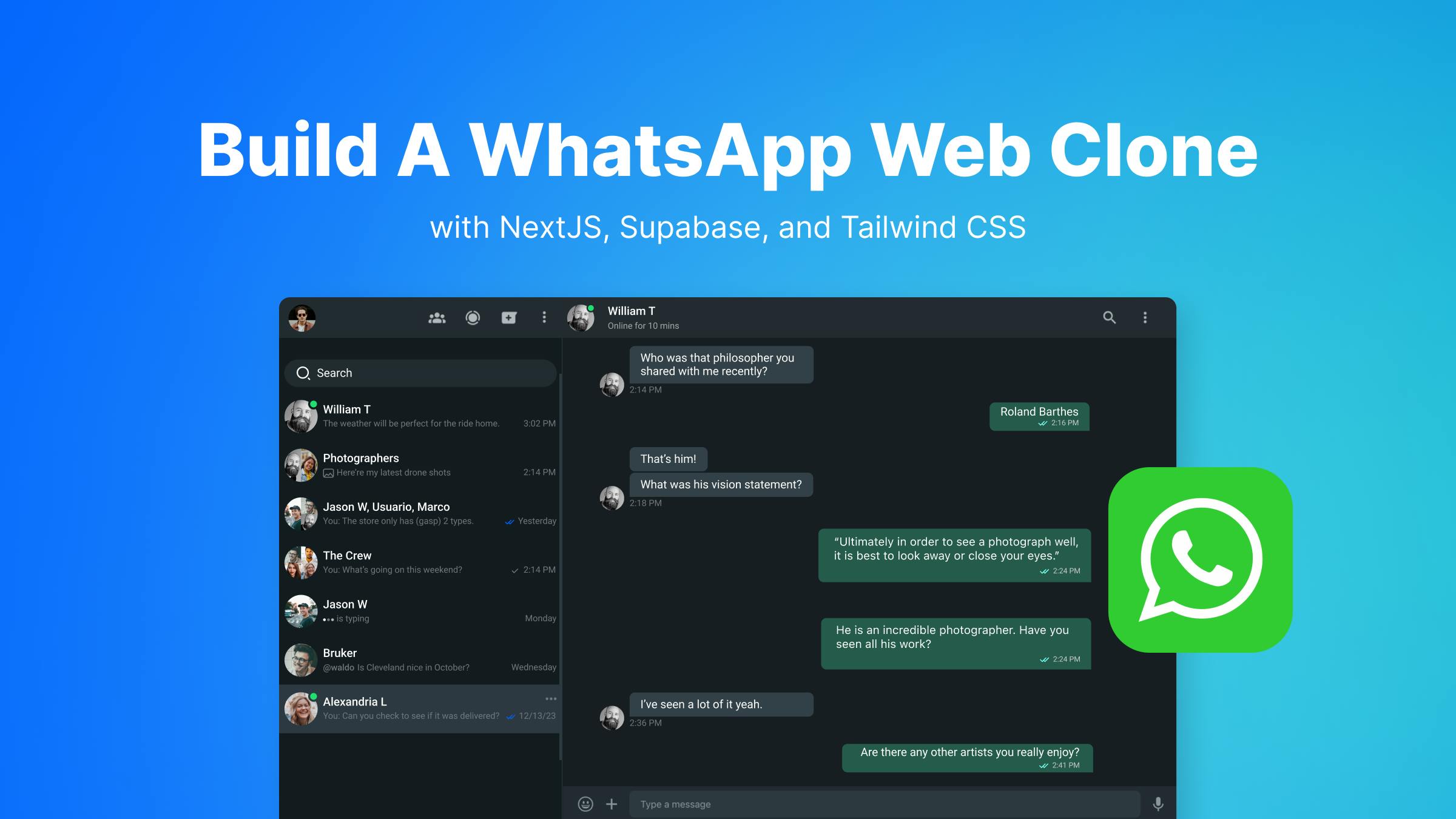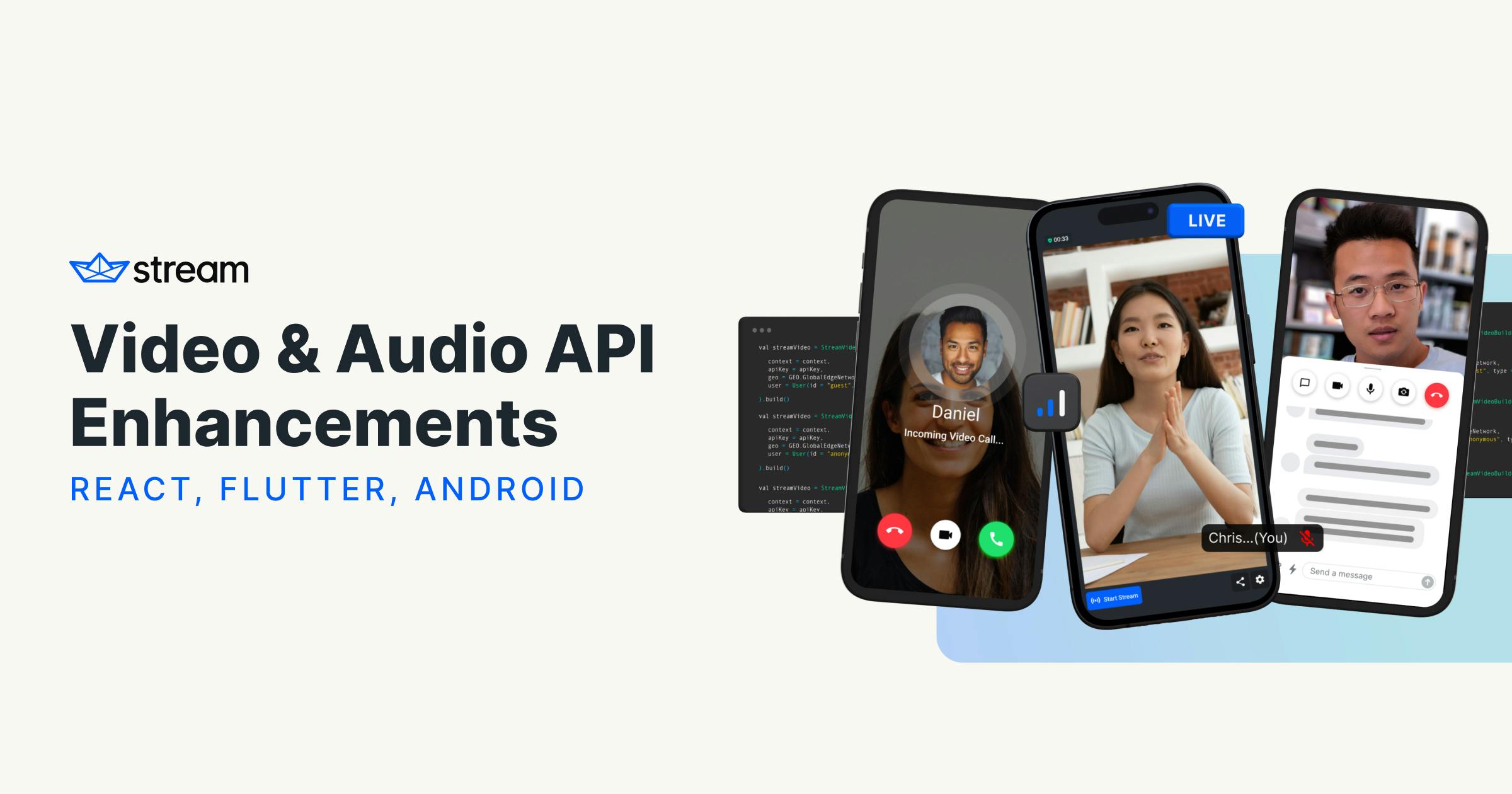With new releases stacking up across our frontend SDKs and central platform infrastructure, there’s never been a better time to start building with Video & Audio from Stream. In just the last few weeks, our engineering teams have shipped the 10 updates you see below, with plenty more on the way.
Highlights include new live streaming UI components for React, improved call performance and new UI cookbook guides for Flutter, video filter support for Android, and a new live streaming dashboard for publishing streams via RTMP — plus a new performance benchmark of 20,000 participants on a single video call, and counting. You’ll find more details about these releases and more below.
Every Stream account comes with $50 per month of Video & Audio API usage credit free of charge forever, with zero risk of incurring overages.
Contact us to book your complimentary Video & Audio onboarding call with our product team.
The releases below represent just a sliver of what you can build with Video & Audio from Stream. With frontend SDKs for React, React Native, Plain JS, Flutter, iOS, and Android, and dedicated solutions for Video Calling, Voice Calling, Live Streaming, and Audio Rooms, we invite you to explore the developer experience and discover how remarkably easy it is to implement video and audio capabilities for your app.
P.S. Don’t miss the fun new example at the end of this post: our step-by-step tutorial and repo to create a clone of WhatsApp for the web, complete with chat, user authentication, and video calling.
React SDK Live Streaming Updates
When users join a live stream in their browser, they expect smooth, high-quality playback with a set of recognizable and intuitive controls. Our latest releases give you greater flexibility to build and customize these experiences with React, providing frontend access to more features of the Video & Audio API.
LivestreamLayout Component
This new UI component lets you consume a WebRTC-based livestream and give watchers a polished and familiar viewing experience. It includes a “Live” indicator badge, the current viewer count, the elapsed time of the livestream, and the ability to toggle full-screen mode on and off. Customizations can be passed as props.
Livestream Thumbnail Support
If your app has a lobby or waiting room where users join calls, you may want to display a thumbnail or preview image there. The API generates this image for you, and the React SDK now has the ability to get this thumbnail and display it using a pre-built component, which you can style with className and style props.
Flutter Video & Audio Calling Updates
New releases in the Flutter SDK maximize the performance of your cross-platform app and increase compatibility with the central Video & Audio API feature set, while providing new ways to add fit and finish to the details of your custom UIs.
Improved VoIP & CallKit Support
The Flutter SDK now works more smoothly on Apple devices for use cases similar to FaceTime, where users can initiate impromptu calls that ring on the recipient’s device. This release improves how the SDK interacts with Apple CallKit to handle incoming calls.
Refactored Call Join Flow
Updates to the Flutter SDK under the hood make it easier to build and test flows where users join a call. The logic behind the Lobby View widget has been improved to align more closely with the Video Calling API, and we’ve added the ability to display call participants in the lobby view.
New UI Cookbook Guides
The finer points of UI customization give your app its identity and make it feel like home to users. Our goal is to standardize components for common functions, while still allowing a high degree of customization. Newly published UI cookbook guides in our documentation help you customize Audio Volume Indicators, Network Quality Indicators, User Avatars, and Participant Labels.
Android Video & Audio Calling Updates
Version 0.3.4 of the Android SDK levels up call performance for users facing connectivity issues, and adds support for video filters.
Support for Fast Reconnect
This release improves the SDK performance when users experience brief connectivity hiccups during a call. If the connection is down for less than three seconds, the client will automatically attempt a fast-reconnect and can achieve that reconnect in about one second under ideal circumstances.
Support for Video Filters
Filters let call participants add a touch of formality — or fun — to their appearance, with video effects like background blurring, and AR elements like glasses or mustaches. The Android SDK now provides everything you need to inject custom filters, like those from Google’s ML kit, into the calling experience.
Stream Video & Audio Platform Updates
As each SDK update brings new features and performance improvements to your frontend implementation, we continue to build out and optimize the platform API and infrastructure powering Video & Audio experiences behind the scenes.
New Livestreaming Dashboard

Your new livestreaming dashboard, pictured above, makes it easy to publish and debug a live stream via RTMP. Just choose one of your apps and navigate to Video & Audio > Overview > Create Livestream. All existing Stream accounts have free access to Video & Audio capabilities in the Stream Dashboard. Need a free account to explore? Sign up here.
New Benchmark: 20,000 Video Call Participants
We’ve now benchmarked 20,000 participants in a single video call with stable performance, and we’re not stopping there. Our engineering team continues to optimize the infrastructure behind the Video & Audio API, which uses SFU cascading architecture to scale without limits.
Thumbnails for Livestream Previews
The Video & Audio system now generates preview images for the livestream Call Type, which you can add to your lobby or waiting room screen. Here is an example of how to get and show the preview thumbnail using the React SDK.
Fun Project Alert! Clone WhatsApp with Chat & Video Calling

This new three-part tutorial series brings in-app chat, video calling, user authentication, UI customization, and hosting all together in a complete app that resembles the web version of WhatsApp. Follow the step-by-step instructions to code along with the tutorial, and check out the project repo on GitHub.

